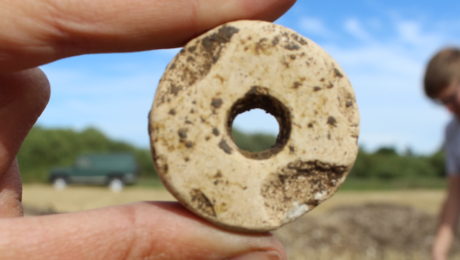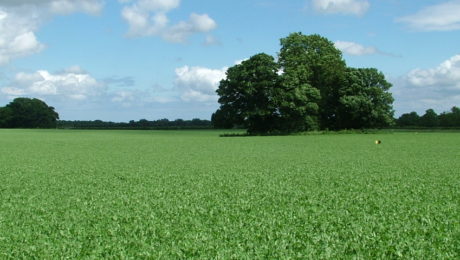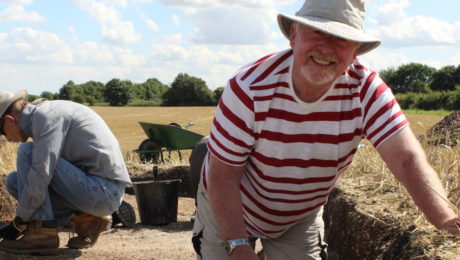Over the years, Elmswell Farm has produced an embarrassment of archaeological riches: Roman coins, Anglo-Saxon burials, Bronze Age weapons and even a cache of stone tools. But perhaps the most impressive is a series of cropmarks spotted from the air, so distinctive that they can only be one thing: an entire medieval village.
John Fenton has tended Elmswell Farm, near Driffield in the East Riding of Yorkshire, for a lifetime. Over the years, an extraordinary number of artefacts – from flint tools to Roman coins and Bronze Age burials – have turned up in his fields and he’s done a marvelous job of keeping them safe, even going so far as to build a small museum.
The discoveries started back in the 1870s, when John Mortimer began excavating some of the many prehistoric burial mounds in the area. In one, he found an early Bronze Age person buried with a hawk, some amber beads, a copper dagger and a gold-decorated wrist-guard. Later, he discovered that this mound also concealed a further 46 Anglo-Saxon burials.
Then, in the 1930s, the Roman finds came tumbling in. Among them were 37 coins (one of which was Iceni), plenty of pottery and, in the neighbouring field, clear evidence of a Roman ladder settlement that had been occupied from the late Iron Age to the early Anglo-Saxon period.
As if that wasn’t enough for one farm, aerial photos taken by the RAF revealed the outline of another settlement – this time a deserted medieval village that’s so well preserved you can still see its crofts, tofts and well-established holloways (paths worn into the ground through time).
Today, John’s farm sits right on top of all this, and he’s convinced that the archaeology needs all the attention it can get, sooner rather than later. We agree!
Over the last few years, metal detectorists have continued to report remarkable finds, and surveys have also added new details to the Iron Age, Roman and medieval villages. What’s more, the remains of an 8th century palace were found just two miles away, and a nearby church at Driffield has been linked with King Aldfrith. With evidence of such a strong Anglo-Saxon presence in the area, it seems likely that excavations at Elmswell might also uncover new evidence of the lesser-known kingdom of Deira.
We want to excavate around these incredible discoveries, to produce new archaeological evidence that can tell a 5,000 year story about all the different people who have lived on this one piece of land.





